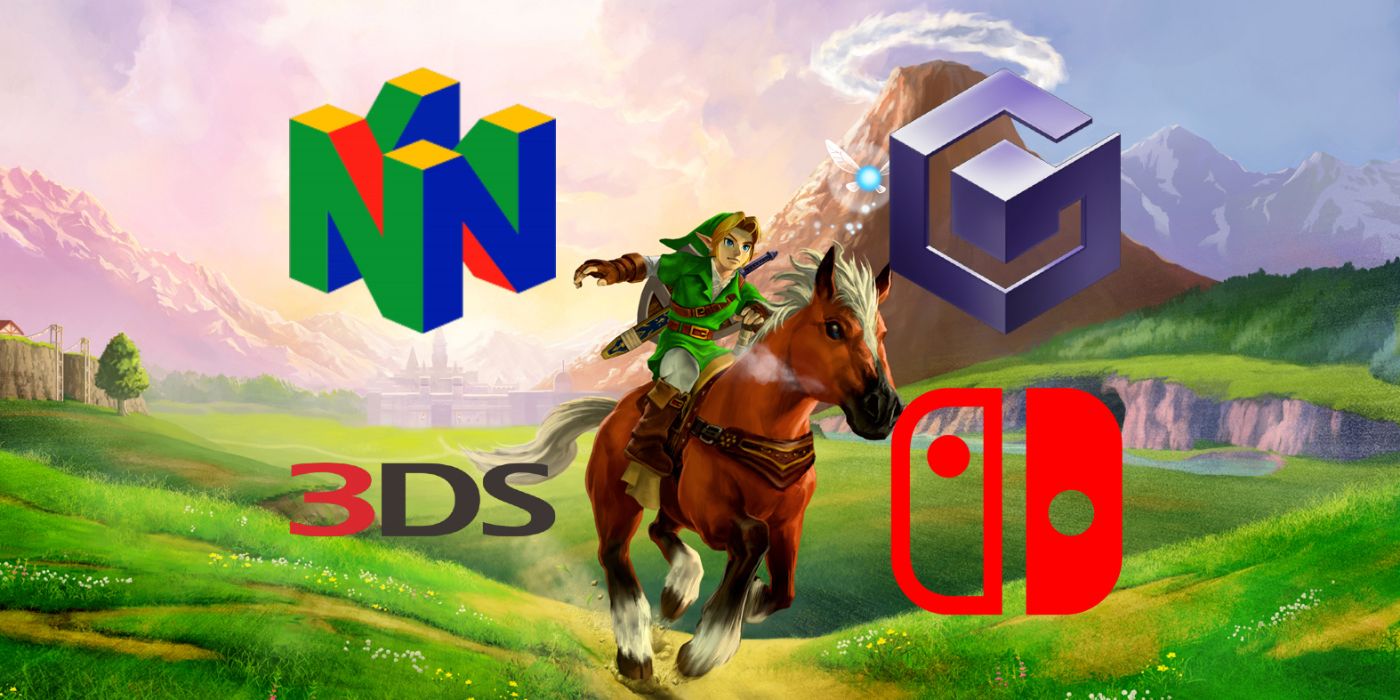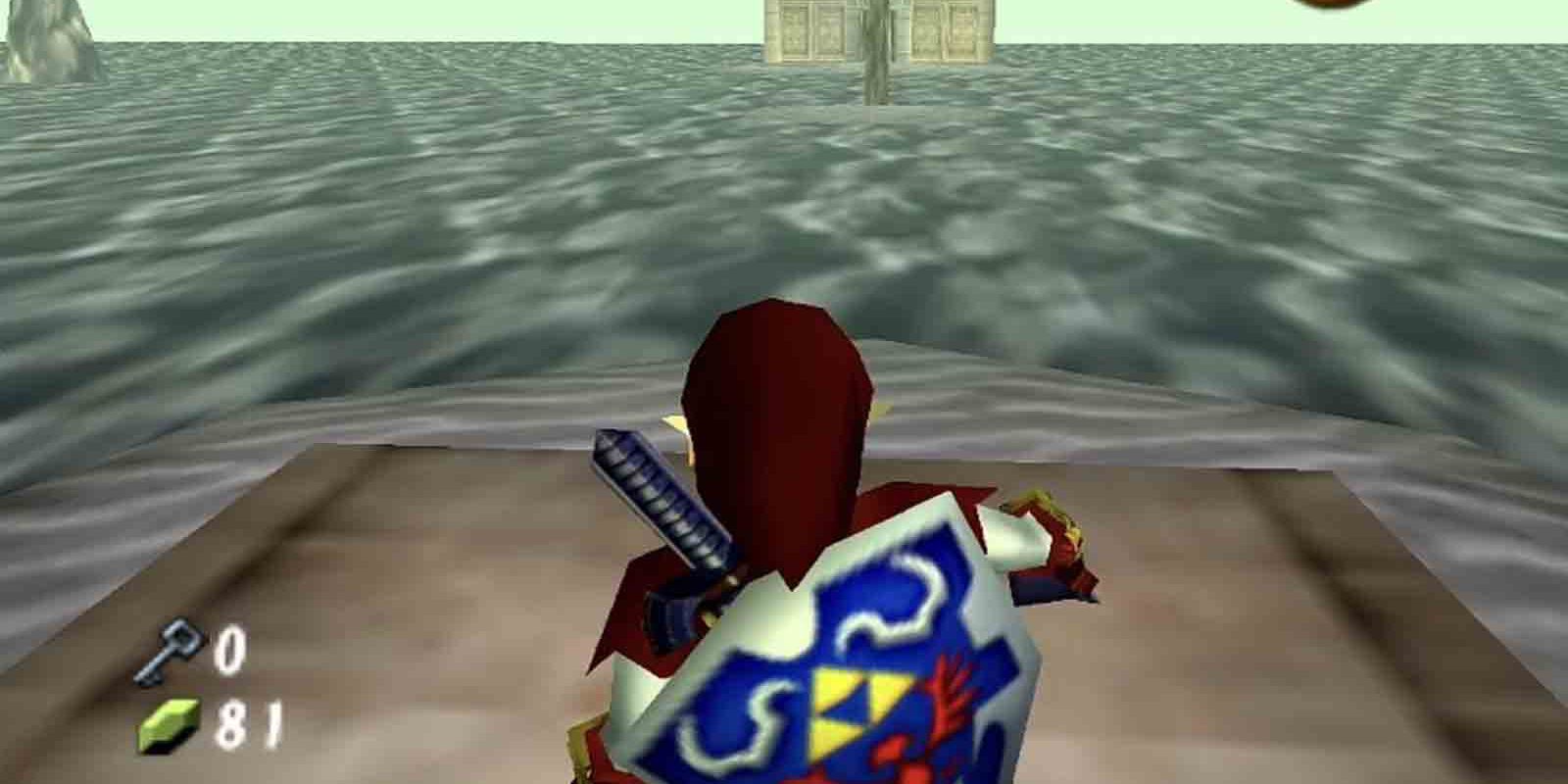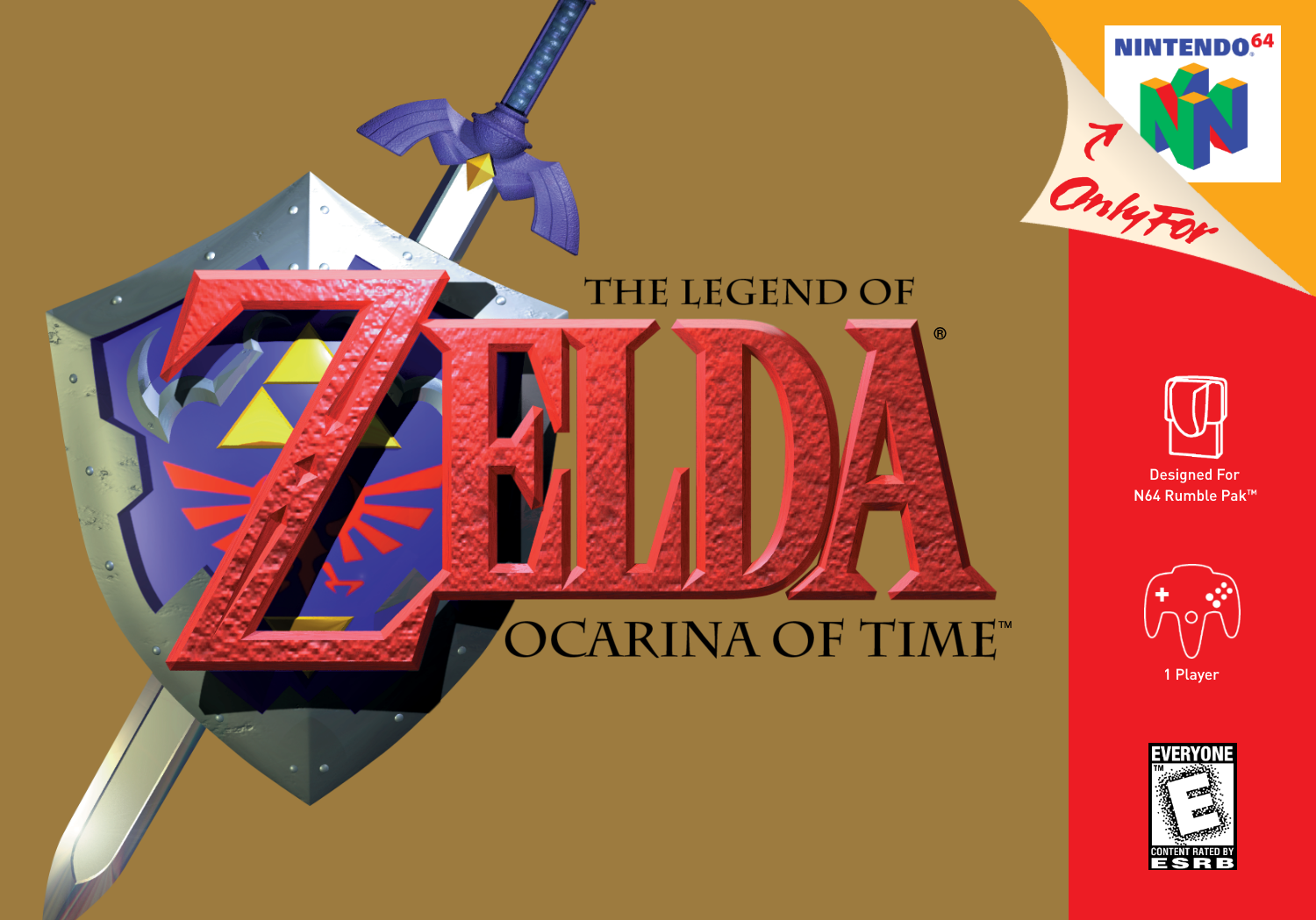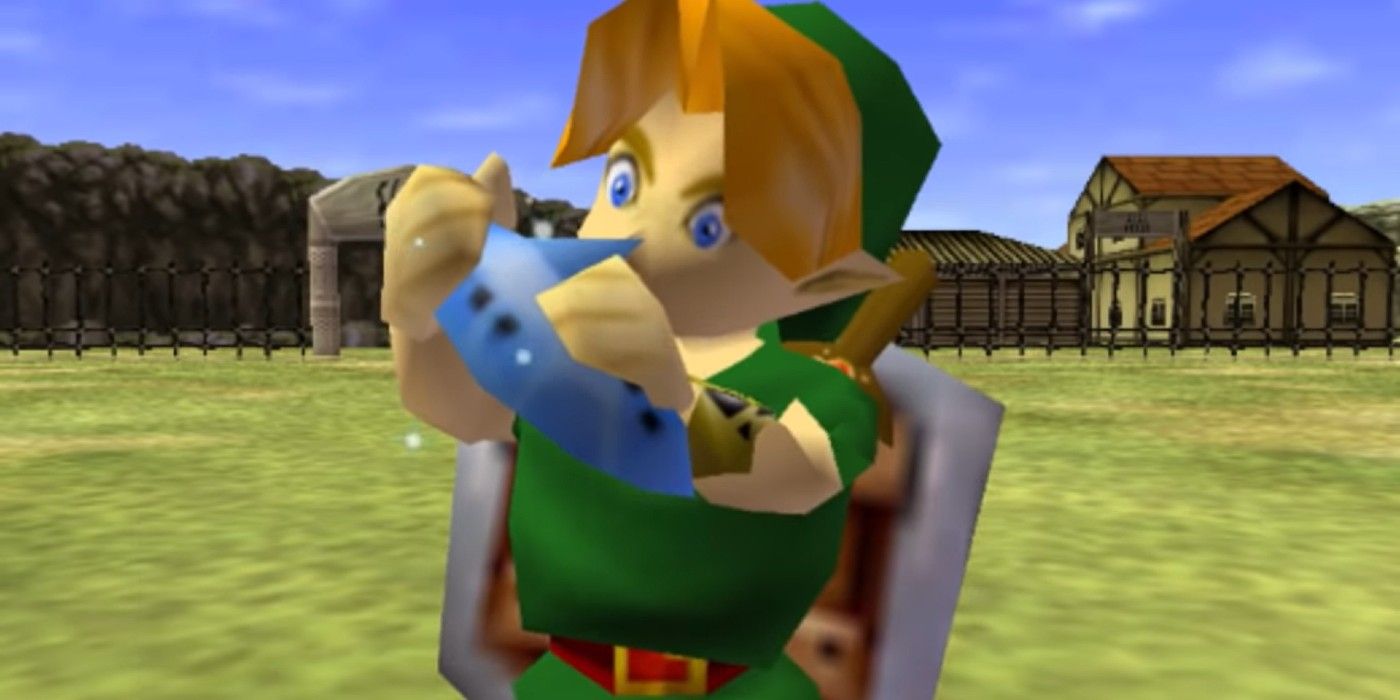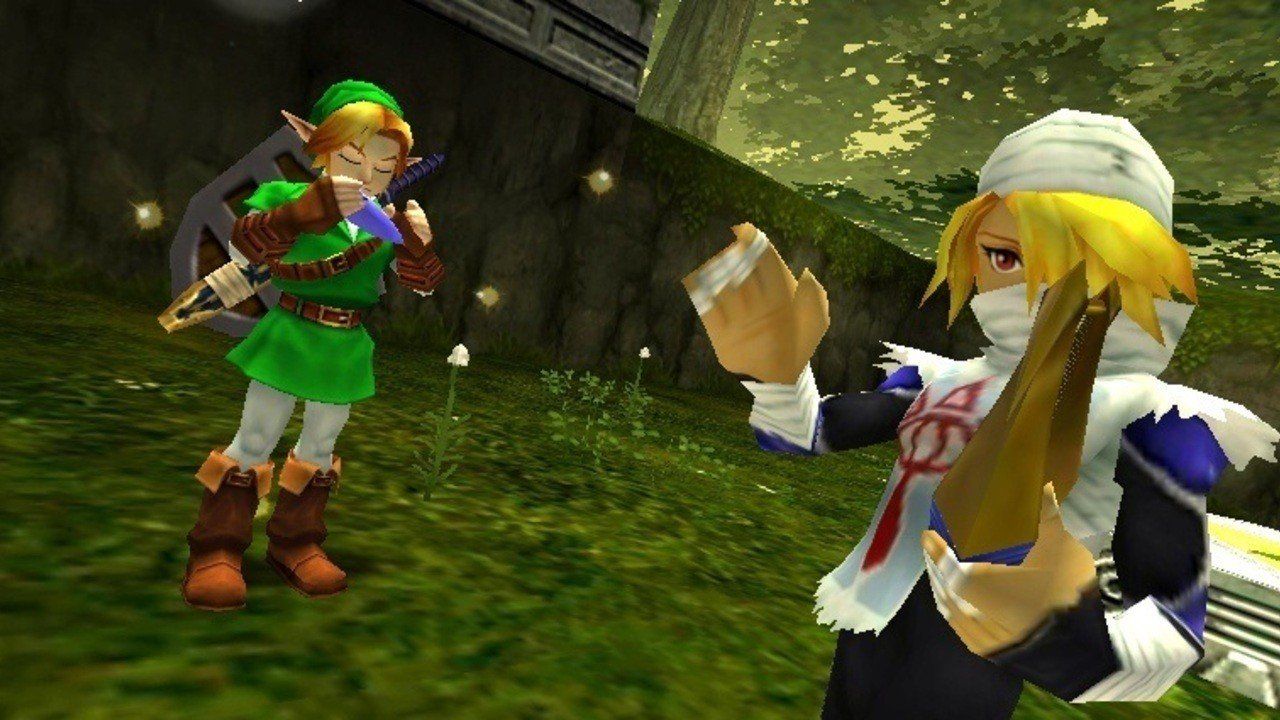Since The Legend of Zelda: Ocarina of Time debuted on the Nintendo 64 in 1998, it has received numerous rereleases, including significant variations for the GameCube, 3DS, and Nintendo Switch Online. Each is perfectly playable, and will deliver an experience still widely considered to be one of the best in video game history, but the different versions of Ocarina of Time are not equal.
The initial release of Ocarina of Time is a watershed moment for The Legend of Zelda. For Nintendo as a whole, Super Mario 64 is generally the quintessential 3D milestone, but Ocarina of Time was Zelda's first foray into that new era of gaming and many consider it still unmatched in the series. Ocarina of Time remained in high regard through 2002, when Nintendo offered an enhanced GameCube version (along with Master Quest, which changed Ocarina of Time's original formula) as a pre-order bonus for The Wind Waker. The N64 classic was again made available on the GameCube the next year, when it was bundled in The Legend of Zelda Collector's Edition, which included the original Legend of Zelda, The Adventure of Link, Ocarina of Time, and Majora's Mask.
In 2011, Zelda's most iconic title got its greatest upgrade in Ocarina of Time 3D for the 3DS. This version also came with Master Quest, and had remastered graphics among other improvements, including making use of the 3DS's glasses-less 3D screens. Though many have been hoping for Ocarina of Time and Majora's Mask to be bundled on the Switch - just like The Wind Waker and Twilight Princess were on Wii U - the best fans got was an emulation as part of Nintendo Switch Online's retro collection. Unfortunately, it came locked behind Nintendo Switch Online's new, too-expensive Expansion Pack subscription tier. The Wii and Wii U Virtual Console also have similar adaptions, but those more faithfully emulated the original N64 version, and have been omitted from the list below for the sake of brevity.
NSO Has Ocarina Of Time's Worst Version
The newest version of Ocarina of Time is also sadly its worst. In a cruel bit of fate a la The Monkey's Paw, the game finally came to the Switch - as so many had been hoping - but came as part of the NSO Expansion Pack and is ultimately a technical inferiority to earlier iterations. Players who start Ocarina of Time on the emulated NSO version will immediately notice that there is a significant amount of input lag. The original had a bit too, but it wasn't nearly as bad. There are also a host of graphical drawbacks, including missing atmospheric effects, Switch Ocarina of Time's water textures looking worse than the original, missing reflections, issues with lighting and shadows, and more. The NSO version of Ocarina of Time is still perfectly playable, but it still doesn't quite stack up to the original release.
Original Ocarina Of Time Is Held Back By The N64
Retro video game enthusiasts would proclaim that the only true way to experience Ocarina of Time is on its original hardware. There may be some incredible sentimental value in playing it on an N64, but that also comes with hardware limitations that have been solved by later versions of the game. The packaging notes that Ocarina of Time is "Designed For N64 Rumble Pak," which was a separate peripheral to bring rumble to the N64 controller. Without the Rumble Pak, the Stone of Agony (admittedly a non-essential item) was useless. The dated nature of the original N64 version also has some modern concerns over resolution and frame rate, though neither of these were particularly bad for the time. Overall, the original iteration is essentially a baseline for comparison with the others, and is still the hallowed title which may have only recently been overtaken by Breath of the Wild as best game ever.
The GameCube Elevates Ocarina's N64 Version
In the grand scheme of comparison, the GameCube and N64 versions of Ocarina of Time are essentially the same. A major benefit to the GameCube version, however, is one of posterity. The N64 may have more trouble working on new displays, and the GameCube version's higher resolution will look better on LED and OLEDs anyway. Coupled with a higher frame rate, the GameCube version performs better for modern sensibilities. The GameCube controller also has built-in rumble, meaning the Stone of Agony will always work, but the controller is simultaneously the cause for a minor drawback. The C Stick is less intuitive for Ocarina of Time's controls than the original C Buttons, and while those inputs are doubly mapped to X, Y, and Z for the GameCube as well, those are similarly confusing since Z (on top of the controller) corresponds to Down C.
The 3DS Has Ocarina Of Time's Best Version
Ocarina of Time 3D is the most thorough reimagining of the N64 classic. With help from the developers at Grezzo, Nintendo made significant graphical updates for this remastered version, which many fans want ported to the Switch. The 3D effects may come down to personal preference, but the overall graphical fidelity for environment textures, character models, and lighting is unmatched by any other version of Ocarina of Time. The 3DS version is also the most feature-complete of the bunch. Not only does it include Master Quest, as previously noted, but it also has a boss challenge mode where players can fight individual bosses for new record times or face all of them one after another in a gauntlet with only five hearts.
The 3DS version also makes improvements to gameplay, with consideration for the hardware. Major annoyances like having to enter the pause screen to equip and remove the Iron Boots (one reason the Water Temple is the most hated Zelda dungeon) were fixed by use of the 3DS's touchscreen to allow for more intuitive inventory management. Similarly, the Stone of Agony was replaced with the Shard of Agony, since the 3DS doesn't have rumble capabilities. Gyroscopic aiming is also available for items like the Slingshot and Fairy Bow. Ocarina of Time is a timeless classic, and can still be thoroughly enjoyed in its original incarnation, but the 3DS remaster is the definitive version of the game.

